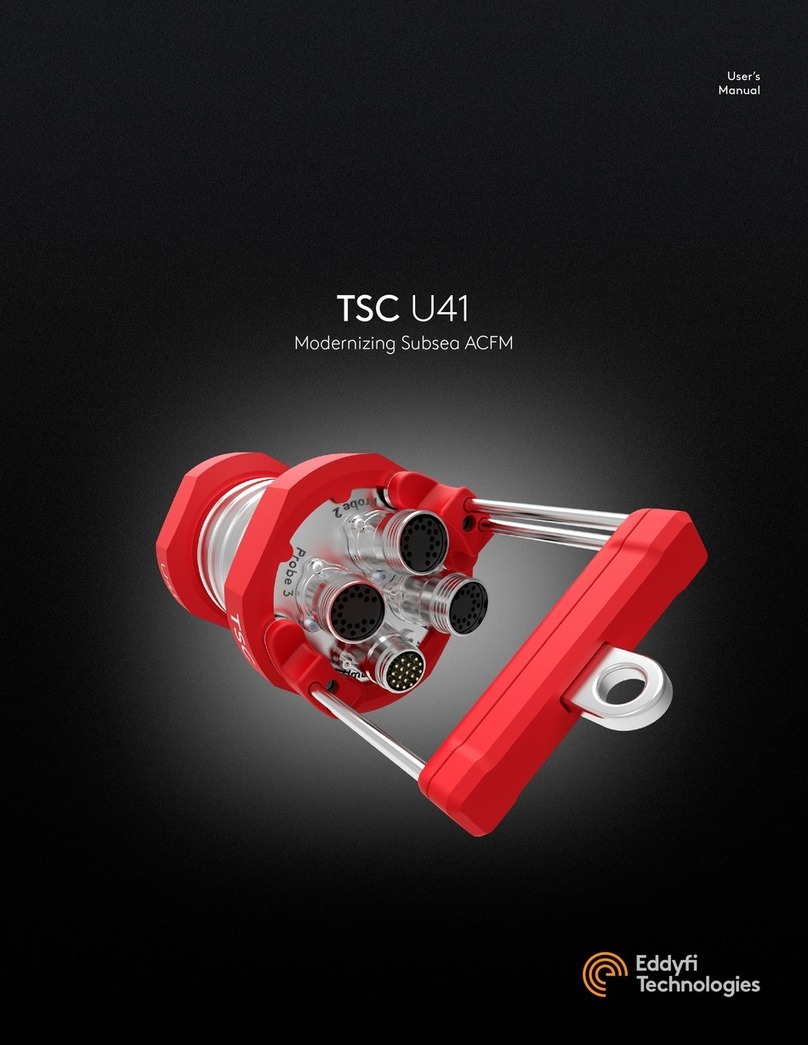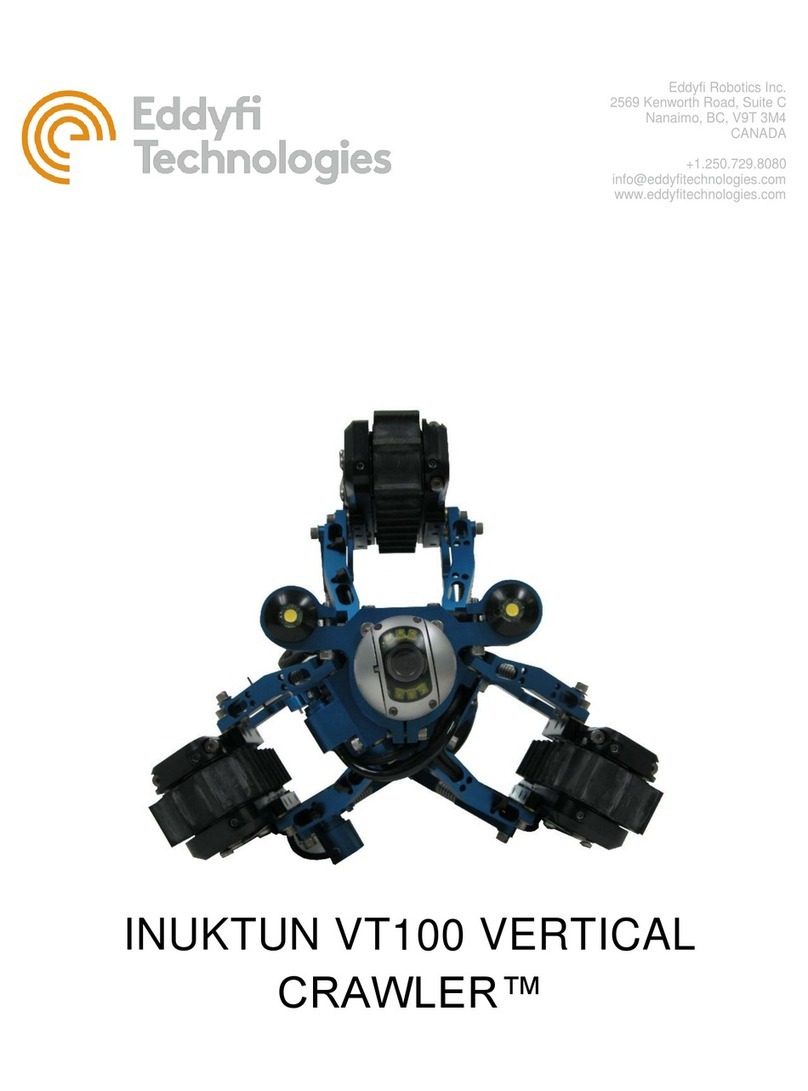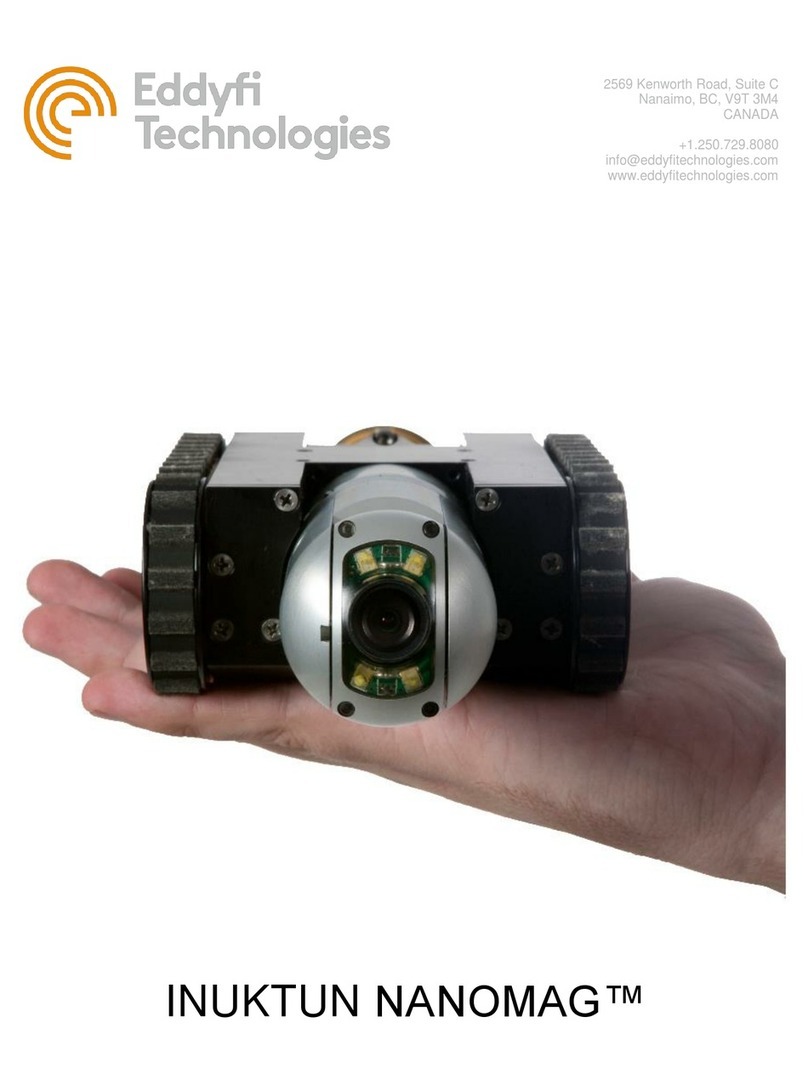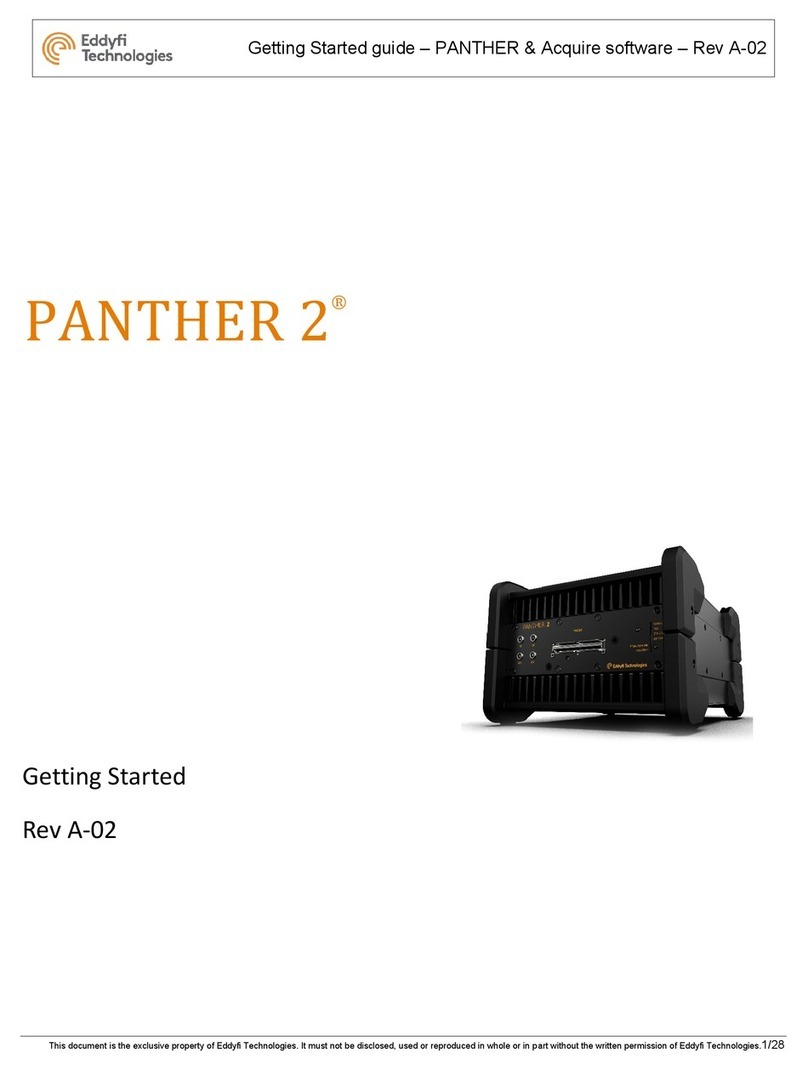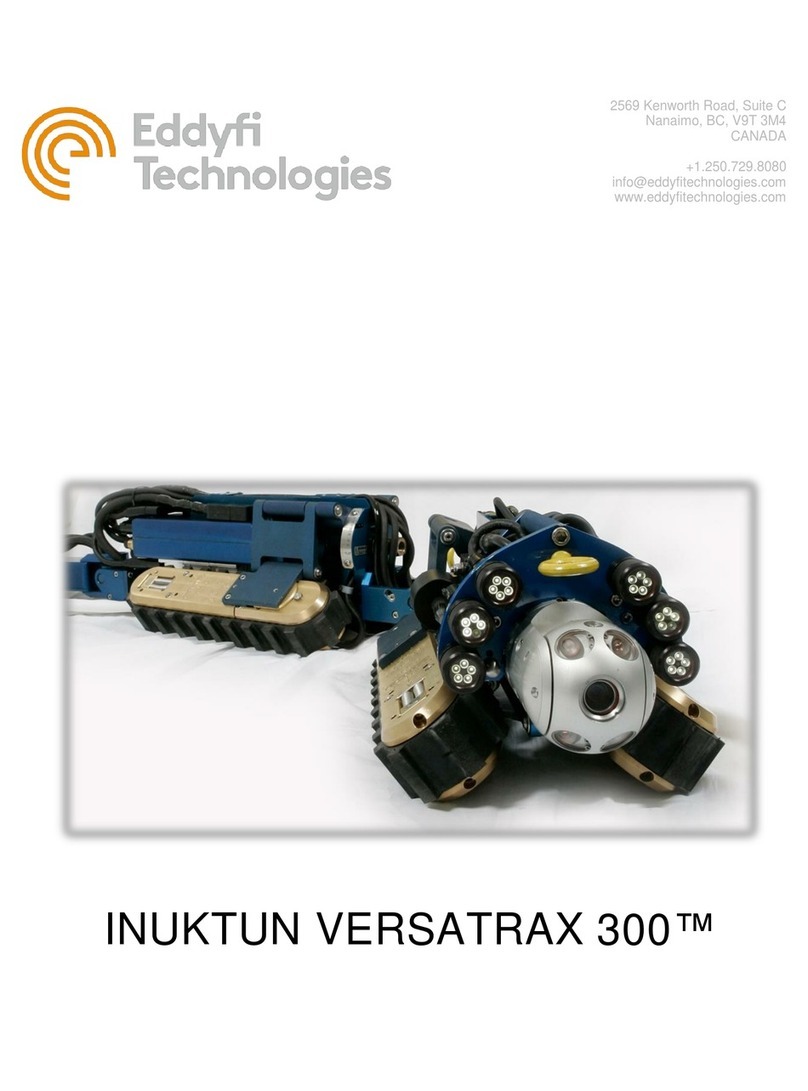•All personnel operating or maintaining this equipment must read and understand the operations
and maintenance manual prior to system operation.
•All personnel operating or maintaining this equipment must be competently trained.
•Appropriate personal protective equipment (PPE) must be worn while operating and maintaining
the equipment.
•Caution:Spark Hazard. Under no circumstances should this equipment be used in a potentially
explosive atmosphere.
•Caution: High Voltage. The tether carries 72VDC and 120VAC to the rear harness block; the
track and camera whips carry 72VDC from the harness block, and the light whips carry 120VAC.
Keep the tether capped at all times when not installed on the vehicle. Follow the guidelines for
preventing tether damage. Do not operate with a damaged tether or device whips.
72VDC/120VAC can cause serious injury or death. Repair damaged wires before operating the
vehicle. A short circuit may damage the controller, cameras, or any attached equipment.
•Disconnect the power source before servicing the product; otherwise, damage or fatal injury may
result.
•Caution: Trip Hazard. Never stand on the tether. The vehicle and winch are strong enough to
pull it out from underneath you and cause you to fall. Standing on the tether may also cause
damage to the internal conductors and decrease the life of the protective jacket.
•Caution: High Temperature. Both the integrated harness block and the Minitracs™ may
become extremely hot during operation. Always wear protective gloves when handling these
parts of the vehicle after they have been in use.
•Caution: Intense Optical Radiation.The 801 lights and Spectrum™ camera lights are
extremely bright. Never look directly at the lights or even from a shallow angle. Always use a
welding filter (shade #8 or higher) when inspecting the LEDs.
•Caution: Pinching Hazard.There is a possibility that one’s fingers could be drawn into the
tracks should they be activated when the vehicle is being handled. To avoid this hazard do not
connect the tether to the portable controller until the vehicle is configured, placed and ready to
use. If the vehicle is being tested, do not connect the tether until handling of the vehicle is
complete. If the vehicle is permanently installed onto a van or trailer and the tether cannot be
disconnected, turn off the power.
•Establish a communication protocol between the person handling the vehicle and the operator at
the computer. It is the operator’s responsibility to check and ask if it is safe to power up the
vehicle or initiate movement.
•Caution: Extreme Magnetic Field. The magnet modules can induce a large enough force to
sever fingers! Always keep vehicle away from ferrous objects and keep hands clear of the
magnets. Also keep any sensitive electronic or magnetic devices away from the vehicle.
System Setup
Working Environment
